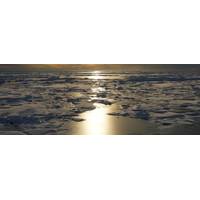
An Arctic “Beyond Recognition” Expected by 2100
region on Earth. The paper, “Disappearing landscapes: The Arctic at +2.7°C global warming,” was led by Julienne Stroeve, senior research scientist at the National Snow and Ice Data Center (NSIDC) and professor at the Centre for Earth Observation Science at the University of Manitoba.“The Arctic is warming at four times the rate of the rest of the planet,” said Stroeve. “At 2.7 degrees Celsius of global warming, we will see more extreme and cascading impacts in this region than elsewhere, including sea-ice-free Arctic summers, accelerated melting of the Greenland
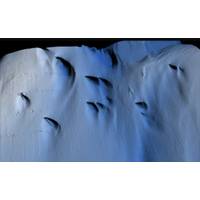
Scientists Discover Mysterious Patterns on Ice Shelf Bottom
data and ice cores to observe how ice shelves change over time. By navigating the submersible into the cavity, we were able to get high resolution maps of the ice underside. It’s a bit like seeing the back of the moon for the first time.”Karen Alley, a glaciologist from the University of Manitoba and co-author of this multidisciplinary study, said, “The maps that Ran produced represent a huge progress in our understanding of Antarctica’s ice shelves. We’ve had hints of how complex ice-shelf bases are, but Ran uncovered a more extensive and complete picture than ever before
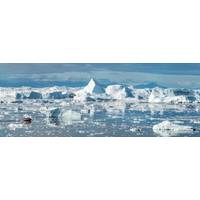
Climate Change is Flooding the Arctic with Light – and New Species
will pass through Milne Inlet during the open-water season.Although the future of Arctic shipping remains uncertain, it’s an upward trend that needs to be watched. In Canada, researchers are working with Indigenous partners in communities with high shipping activity — including Churchill, Manitoba; Pond Inlet and Iqaluit in Nunavut; Salluit, Quebec and Nain, Newfoundland — to establish an invasive species monitoring network. One of the approaches includes collecting water and testing it for genetic remnants shed from scales, faeces, sperm and other biological material.This environmental

ASL Hires Dr. Asplin
investigated synoptic meteorological drivers of storm surge events in the western Canadian Arctic, including a traditional knowledge study through direct consultations with residents in three coastal communities in the Inuvialuit Settlement Region. Dr. Asplin completed a Ph.D. at the University of Manitoba under Dr. David Barber investigating how Arctic storms influence dynamic and thermodynamic processes in Arctic sea ice and across the ocean-sea ice atmosphere interface, and how these processes might change with climate change. This project details an emerging ice-free Arctic ocean over the

SEAMOR: ROV to Last Ice Project in Canada
SEAMOR Marine will provide a Remotely Operated Vehicle (ROV) to the department of Fisheries and Oceans Canada in Manitoba. The vehicle will be deployed to the High Arctic to inspect the area which remains frozen year-round and take part in research and evaluating ways to protect this special ecological region.The High Arctic is an important area encompassing the northern regions of Canada (Arctic Basin, Baffin Bay and the Pikialasorsuaq, or North Water Polynya) and reaches to western Greenland. This area remains frozen throughout the year, for multiple years, acting as an important refuge for ice-depend
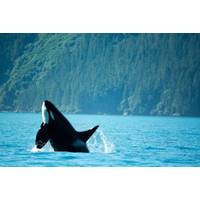
Regulator: Expand Pipeline, Protect Killer Whales
Morgan Canada to ensure it gets built.The move came after Canada's Federal Court of Appeal overturned the Liberal government's 2016 approval to expand the pipeline, which runs from Alberta's oil heartland to the British Columbia coast. (Reuters reporting by Rod Nickel in Winnipeg, Manitoba; editing by Jonathan Oatis
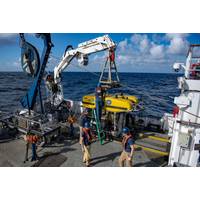
Possible Meteorite Fragments Found in Marine Sanctuary
golf cart-sized meteorite crashed into NOAA’s Olympic Coast National Marine Sanctuary on March 7 around 7:15 p.m. PST, about 15 miles off the Washington coast. Despite having broken into many pieces before falling to the sea, its impact was so violent it registered on seismometers as far away as Manitoba, Canada. The cosmic burst, picked up by NOAA’s NEXRAD weather radar, created a giant fireball called a bolide, as well as a sonic boom, but no tsunami.A group of scientists from NOAA, NASA and the Ocean Exploration Trust (OET) working with the 64-meter research vessel E/V Nautilus used an
AZFP used in Arctic for Zooplankton Research
Sarah Fortune, PhD candidate at the University of British Columbia and guest student at Woods Hole Oceanographic Institution in collaboration with Dr. Steve Ferguson from Fisheries and Oceans Canada and University of Manitoba as well as LGL Limited and VDOS Global LLC, conducted several days of zooplankton backscatter observations in Pangnirtung Fiord with co-located Optical Plankton Counter data. The four-frequency (125, 200, 455 and 769 kHz) AZFP with cage and floatation from ASL’s lease pool was shipped to rendezvous with the Arctic equipment. The instrument was deployed in Pangnirtun

SeaBotix vLBV Sales Reach 100 Systems
, compact ROV with adjustable angle (vectored) thrusters in order to complement and advance the capability of the well-established SeaBotix ROV range in the offshore environment. The 100th SeaBotix vLBV system will be delivered to the Centre for Earth Observation Sciences (CEOS) at the University of Manitoba, Canada. The purchase was funded by The Canada Foundation for Innovation project and sold through MacArtney Underwater Technology Group’s Ocean Science Department as part of a consolidated delivery of scientific subsea equipment. The 300m (1,000 ft.) capable vLBV is tested and rated for operations
 August 2025
August 2025





